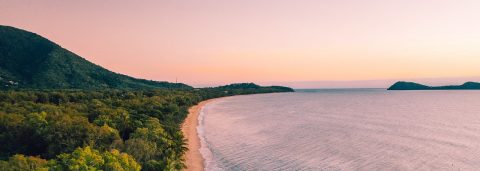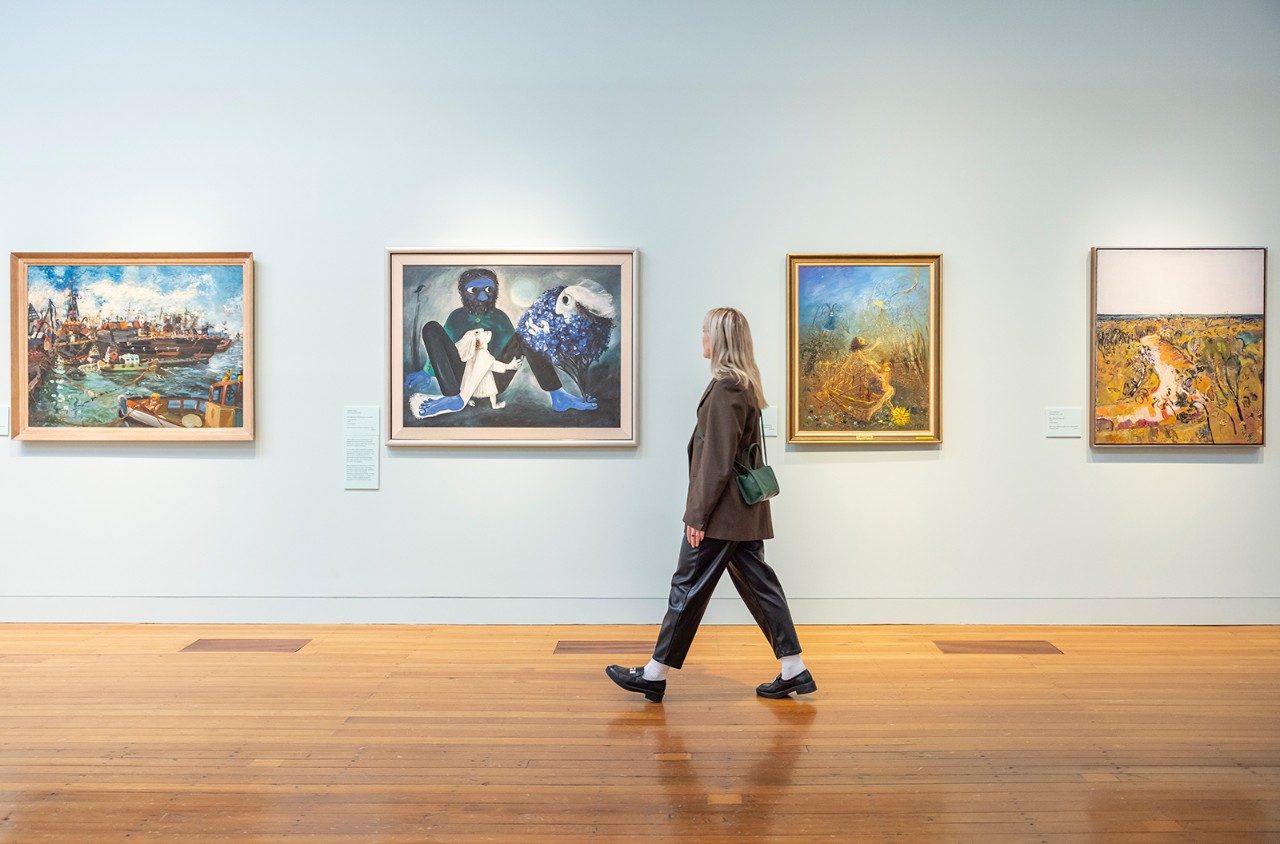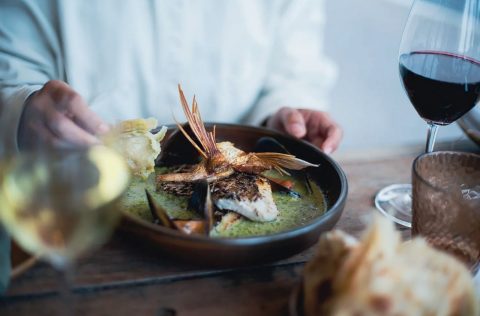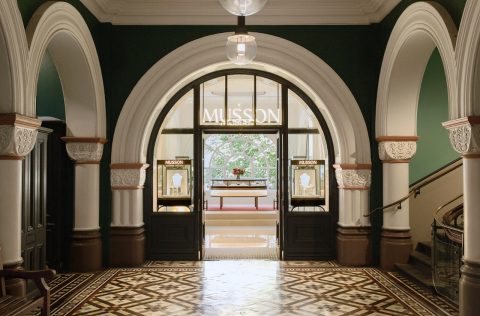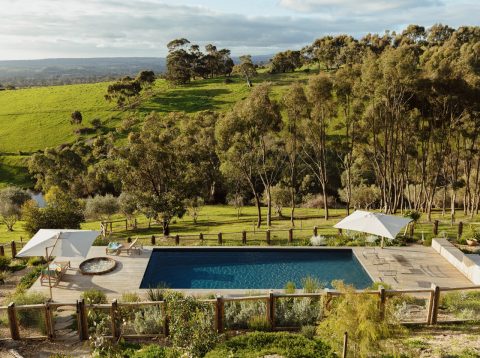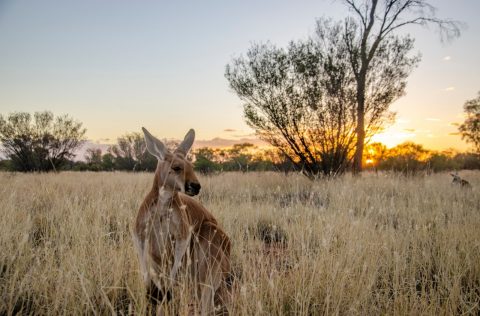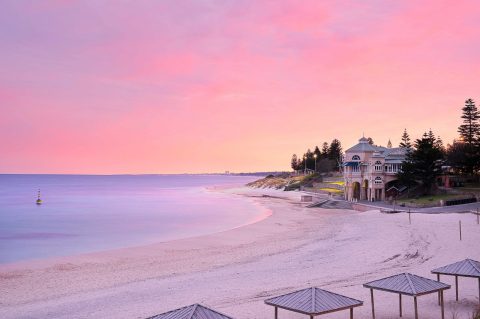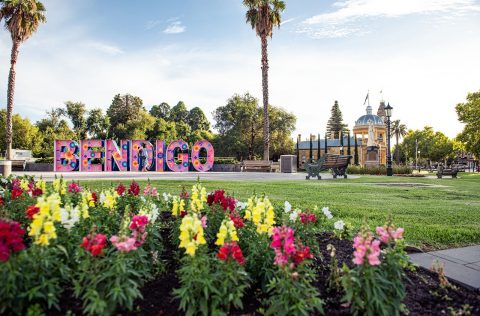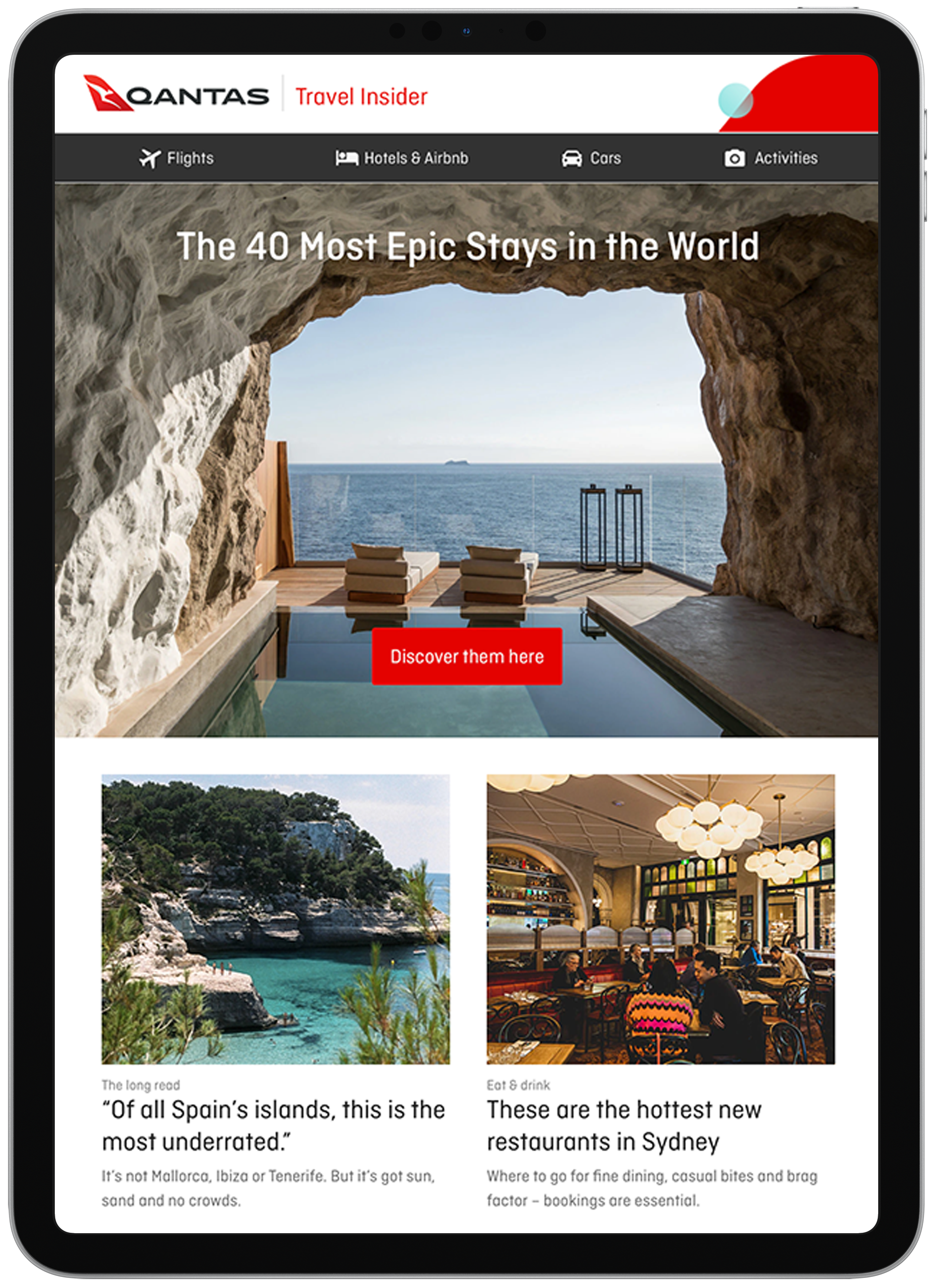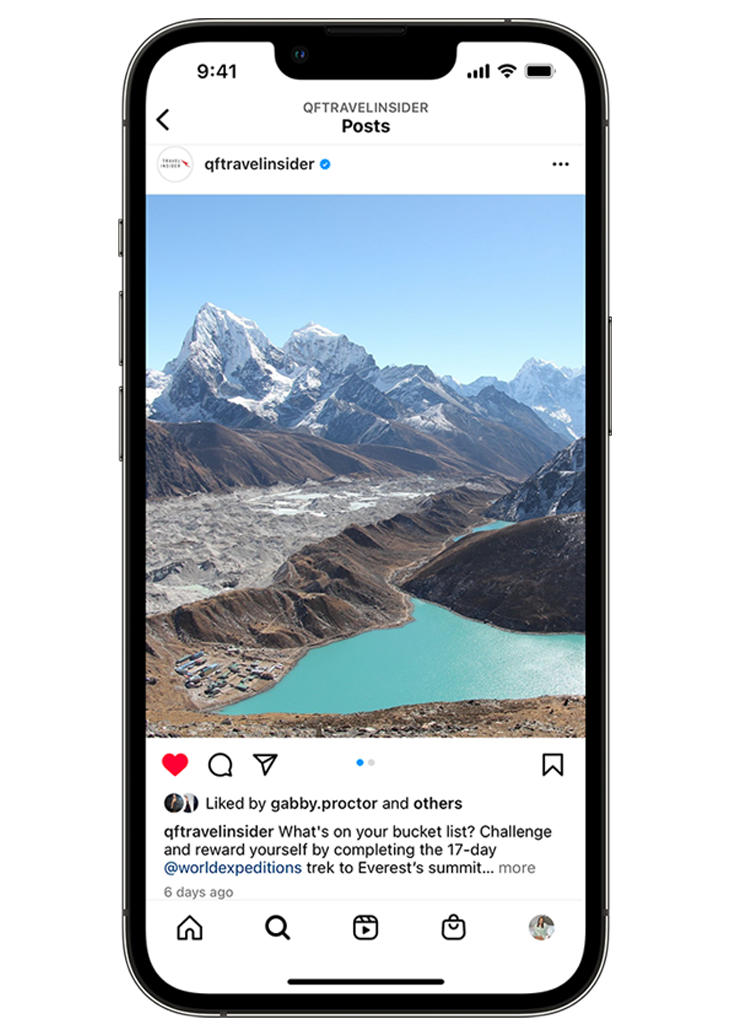These are Australia’s Most Stunning Natural Wonders
For sheer diversity alone, the Australian continent’s natural wonders are world class. From the majesty of the Great Barrier Reef to the deep cultural resonances of Uluṟu, the country is blessed with postcard-perfect destinations from coast to coast. Any one of the awe-inspiring landmarks in this list makes for the perfect short break so it’s about time you began crossing them off.
Image credit: Tourism Western Australia
Nature’s Window, WA
1/32Nature knows what makes a good photo – so much so that it has created the perfect vista of Kalbarri National Park through this wind-eroded structure, on the land of the Nanda people. It’s easy to access this seemingly precarious stack of layered tumblagooda sandstone via a one-kilometre return walk from a sealed lookout.
Image credit: Getty Images/iStockphoto
Remarkable Rocks, SA
2/32These craggy granite forms dominate the landscape in this section of Flinders Chase National Park on Kangaroo Island, believed to be the land of the Ramindjeri, Ngarrindjeri, Kaurna, Nharangga and Barngalla people. Much of their surface is covered in pumpkin-coloured lichen, made even more vibrant when contrasted against the bright blue of the Southern Ocean.
Image credit: Getty Images/iStockphoto
Montgomery Reef/Yowjab, WA
3/32Visit at the wrong time and you’ll miss it: Montgomery Reef, on the land of the Dambimangari people, appears and disappears with the tides. Time things perfectly – as the tide is going out – and you’ll see scores of mini waterfalls spring up and pour down the sides of the exposed coral shelves.
Image credit: Alamy Stock Photo
Karlu Karlu/Devils Marbles, NT
4/32One of the Dreaming stories the Traditional Owners – namely the Kaytete, Warumungu, Warlpiri and Alyawarra people – tell is that Arrange, the Devil Man, who was passing through the area, dropped clusters of hair on the ground that turned into Karlu Karlu’s granite boulders. The rounded “marbles” are stacked up to six metres high and located south of Tennant Creek.
Image credit: Getty Images/iStockphoto
Cradle Mountain, Tas
5/32Although you can traverse the rugged trails up and around this mountain, its splendour is best appreciated from below. There’s a perfect panorama from the far side of Dove Lake that encompasses both peak and lake.
Image credit: Getty Images/iStockphoto
Anna Creek Painted Hills, SA
6/32Australia still has some secrets. Somewhere between Coober Pedy and Lake Eyre, in the quiet central north of South Australia, these multicoloured sandstone hills stand proud on the land of the Arabana people. They can only be seen from the air and before being recently “discovered”, they were known only to those who ventured deep into this part of the outback.
Image credit: Getty Images/iStockphoto
Painted Cliffs, Tas
7/32Eons of exposure to salty breezes and ocean swell have warped and weathered the sandstone cliffs on Maria Island, home of the Puthikwilayti people. The end result is an outcrop of rock stained with concentric circles in rich golden hues and featuring honeycomb patterns. A marked two-kilometre walk, best tackled around low tide for safety, takes you right beneath the cliffs.
Lake Hillier, WA
8/32Amid a glorious blue and green landscape of the Kepa Kurl Wudjari and Ngadju people, Lake Hillier garnered fame for its shocking shade of bubblegum pink. Experts have variously argued that its colour is due to factors such as high salinity or algae but its must-see status can’t be contested. It’s located offshore, on Middle Island, east of Esperance.
Umpherston Sinkhole/Balumbul, SA
9/32Once an empty pockmark on the landscape, this dent in the earth began its transformation into a secret sunken garden in the 1800s, thanks to farmer James Umpherston. It’s now an oasis of delicate flowers and hanging tree tendrils, with plenty of space to sit.
Image credit: Getty Images/iStockphoto
Walls of China, NSW
10/32Mungo National Park, a meeting palace of three traditional territories (that of the Ngiyampaa, Paakantji and Mutthi Mutthi people) contains a collection of other-worldly sand and clay formations. The Walls of China, in the park’s south-east, are one of the most iconic. The lunette’s rain- and wind-sculpted sedimentary layers have been found to contain impressive Aboriginal artefacts.
Image credit: Getty Images/iStockphoto
Twelve Apostles, Vic
11/32Emerging dramatically from the Southern Ocean, these formations are the main attraction along Victoria’s Great Ocean Road, home to the Eastern Maar and Wadawurrung people. Only eight of the limestone pillars still stand, spaced out along the coast.
Image credit: Getty Images/iStockphoto
Pinnacles Desert, WA
12/32This is probably the closest you’ll get to a lunar excursion – these chalky pillars look eerily similar to a moonscape. They’re located in the Nambung National Park on Yued land, just over two hours’ drive north of Perth.
Image credit: Getty Images/iStockphoto
Wave Rock, WA
13/32This undulating formation – more than 100 metres long and 15 metres high – is located on Noongar land near Hyden, about a 3.5-hour drive east of Perth. If you visit after it rains (one of the rare times this pseudo-wave actually holds water), you might even be treated to a smattering of just-bloomed wildflowers.
Image credit: Alamy Stock Photo
Cathedral Gorge, WA
14/32The tiger-striped Bungle Bungles are the big-ticket item in Purnululu National Park (of the Gija and Jaru people) but Cathedral Gorge – a soaring natural amphitheatre hidden deep within the range – is more than worthy of a detour. The acoustics are reportedly incredible so give it your best cooee.
Image credit: Alamy Stock Photo
Talia Caves, SA
15/32A number of crevices and crags make up this natural wonder on the Eyre Peninsula, close to a windswept beach of the same name on Nawu land. The two most impressive features are The Woolshed, a gargantuan cavern in the granite; and The Tub, a 50-metre-wide slice in the rock.
Wineglass Bay, Tasmania
16/32You need some height to fully appreciate the way this bay curves like a goblet, full to the brim with turquoise water. Climb one of the surrounding pink-hued granite Hazards (the closest peaks) for the bird’s-eye view.
Image credit: Alamy Stock Photo
Balls Pyramid, NSW
17/32Lord Howe Island has a surprising Hawaii-esque beauty. About 25 kilometres south-east is Balls Pyramid, a rocky arrowhead that shoots more than 550 metres up from the ocean floor that’s also the world’s tallest sea stack. It’s a popular diving and birdwatching spot, with seabirds circling the point every hour.
Image credit: Alamy Stock Photo
Wilpena Pound, SA
18/32The centrepiece of the Flinders Ranges, Wilpena Pound has been home to Adnyamathanha people for tens of thousands of years. The peaks of this natural amphitheatre form an almost-perfect ring around the glowing ground inside.
Image credit: Alamy Stock Photo
Noosa Everglades, Qld
19/32Florida doesn’t have a monopoly on everglades. In fact, another everglade environment – subtropical marshland characterised by a network of branching waterways – is found in South East Queensland along the Noosa River, home to the Kabi Kabi (Gubbi Gubbi). Explore this lush spot by kayak.
Image credit: Alamy Stock Photo
Spa Pool, WA
20/32Hidden in a crevice of vermillion rock dotted with the occasional hardy, scrubby tree is an oasis of cool teal water – the Australian outback at its finest. The pool, in Karijini National Park’s Hamersley Gorge on the land of the Banjima, Innawonga and Eastern Guruma people, is fed by a waterfall so it’s always fresh.
Uluṟu, NT
21/32This sienna-hued rock has stood sentinel over Central Australia for eons and is incredibly significant to the land’s traditional owners, the Yankunytjatjara and Pitjantjatjara people. Its magnificence is best appreciated at sunrise and sunset, as the monolith’s colour becomes increasingly vivid in response to the changing light.
Image credit: Getty Images/iStockphoto
Ningaloo Reef, WA
22/32The popularity of Ningaloo – Western Australia’s counterpoint to the Great Barrier Reef – has soared in recent years as people head west to swim alongside the gentle giants of the sea: whale sharks. Located off the coast of Coral Bay, it’s about a 12-hour drive north (or two-hour flight) from Perth. The region, home to the West Thalanyji-Yinigudara people, boasts over 140 protected Aboriginal sites, spanning ceremonial and burial sites and is also the site of the oldest Aboriginal jewellery recovery; a 32,000 beaded necklace.
Image credit: Getty Images/iStockphoto
Cape Pillar, Tas
23/32The stone columns that form these sheer cliffs in south-east Tasmania – home of the Pydairrerme people – reach for the sky like long, skinny needles. Rising about 300 metres above sea level, there’s no need to avoid them if you’re afraid of the vertiginous drop – they’re best viewed from a boat.
Image credit: Getty Images/iStockphoto
Shark Bay, WA
24/32Though the bay itself is beautiful – as most West Australian beaches are – Shark Bay earns a place on this list for a very particular feature. One of the world’s only two collections of living marine stromatolites live in the shallows, growing less than a millimetre each year, it’s long been revered by its Traditional Owners, the Malgana, Nanda and Yinggarda people and contains several significant burial sites, rock shelters and hunting locations.
Image credit: Getty Images/iStockphoto
Three Sisters, NSW
25/32While the Blue Mountains villages of Katoomba and Leura are charming, it’s this distinctive rock formation that people take the daytrip west from Sydney for. The viewing platform is usually busy so a sunrise visit offers the chance to appreciate the splendour set on Gundungarra and Darug Country without the crowds.
Whitehaven Beach, Qld
26/32The Great Barrier Reef is magical but when you’re done fulfilling your undersea bucket list, spread out a towel on this sugary sand: it really is blindingly white. The Whitsunday Islands, traditionally owned by the Ngaro people, are part of a national park so set aside some time in your sun-soaking schedule to take a walk through the greenery.
Bungle Bungle Range, WA
27/32They may look like long-abandoned hives created by some sort of giant bee but the Bungle Bungles, on the Country of the Gija and Jaru people, are actually quartz sandstone formations eroded over millions of years. The dark stripes are the result of bacteria that change the colour of the rock. You’ll find the domes in the Kimberley region’s UNESCO World Heritage-listed Purnululu National Park.
Image credit: Getty Images/iStockphoto
Daintree Rainforest, Queensland
28/32The Daintree’s lush tropical flora hides the impressive saltwater crocodile, dinosaur-like cassowary bird, harmless golden orb spider and countless creatures found nowhere else in the world. Take a guided walk from a Traditional Owner (this is the home of the Eastern Kuku Yalanji people) to get a real understanding of this unique ecosystem — Walkabout Cultural Adventures offer half or full day experiences.
Image credit: Getty Images/iStockphoto
Mount Kosciuszko, NSW
29/32The Snowy Mountains might be most popular when they’re, well, snowy but there’s also plenty to do at Australia’s highest peak, Country of the Wiradjuri, Wolgalu, Ngunnawal and Monaro Ngarigo people, when the weather is warm. A series of walking and cycling tracks wind up and around the mountain – the easiest of which is the 13-kilometre (return) Kosciuszko Walk that begins with a chairlift ride to the trailhead.
Image credit: Getty Images
Kata Tjuṯa, NT
30/32Uluṟu, home of the Yankunytjatjara and Pitjantjatjara people, might get the lion’s share of attention when it comes to hulking red rocks but these bornhardts are just as incredible. Also known as The Olgas, Kata Tjuṯa is made up of 36 domed rock formations encircled by tranquil walking trails.
Great Barrier Reef, Qld
31/32The world’s largest coral reef follows the curve of the Queensland coast for more than 2600 kilometres – make peace with the fact that you’re not going to see it all in one visit. Romantics should book an exclusive experience on the Heart Island pontoon; families should use Hamilton Island as their base; or hire a yacht and cover a swathe of this natural wonder over multiple days.
Up Next
32/32